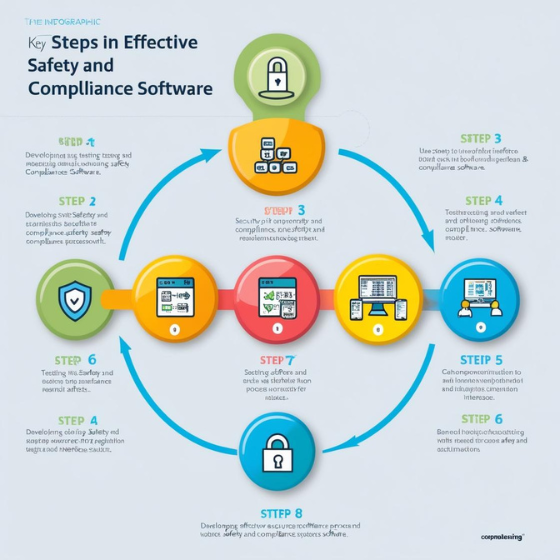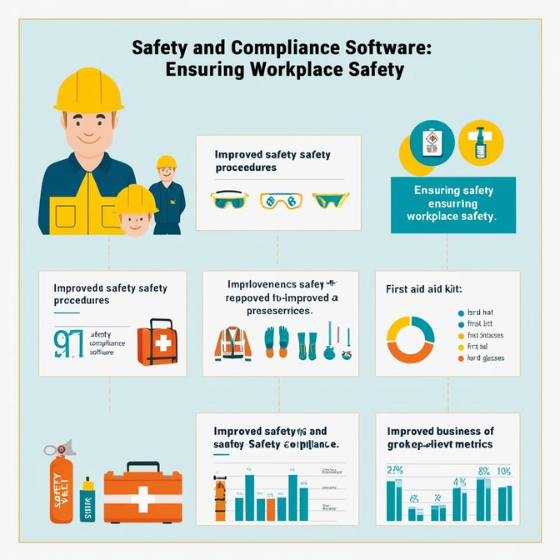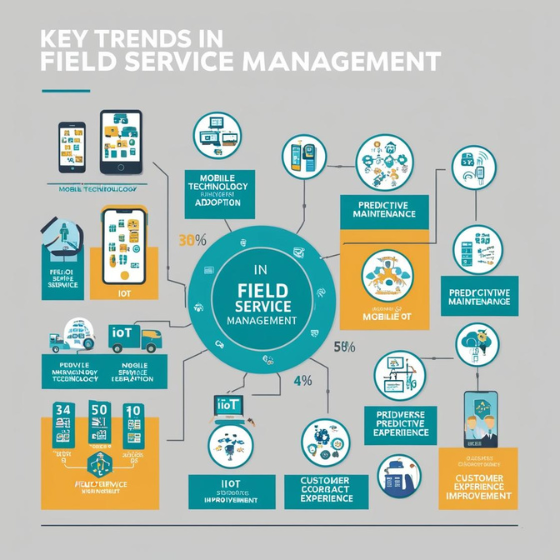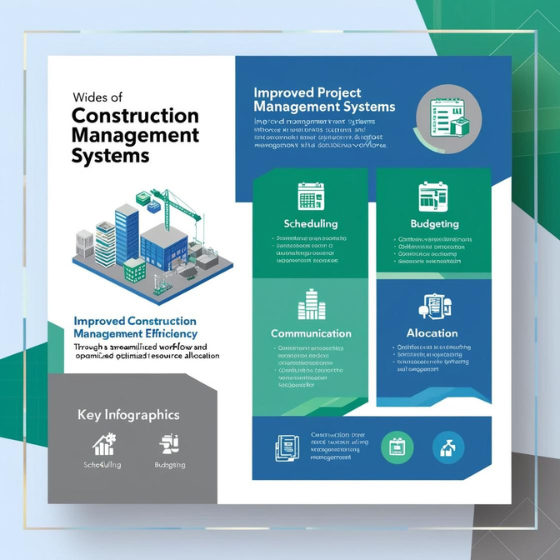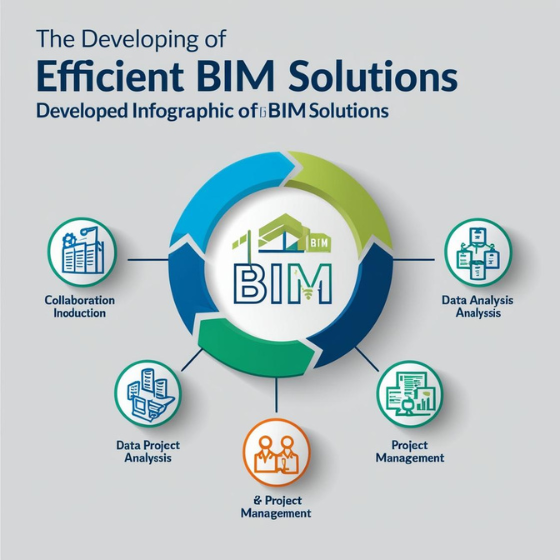How to Develop Effective Safety and Compliance Software
In today’s fast-paced business environment, ensuring workplace safety and compliance is more critical than ever. With evolving regulations, industry standards, and increased safety risks, businesses must use effective tools to maintain compliance and protect their employees. Safety and compliance software plays a pivotal role in managing these challenges by automating processes, tracking safety measures, and ensuring organizations meet legal and regulatory requirements.
Developing effective safety and compliance software requires a strategic approach that takes into account both the technical and operational needs of a business. This blog will guide you through the essential steps for developing safety and compliance software that delivers results.
Why Safety and Compliance Software is Crucial
Before diving into the development process, it’s important to understand why safety and compliance software is a game-changer for businesses. Such software helps organizations by:
- Ensuring Compliance: It keeps track of the latest regulations and helps businesses adhere to health, safety, and environmental laws.
- Reducing Risk: By automating safety checks and procedures, the software helps identify potential hazards before they turn into serious issues.
- Improving Efficiency: Automating reporting, training, and incident management saves time and reduces human error, making safety processes more efficient.
- Fostering a Safety Culture: With easy access to safety data and training, employees become more aware of their responsibilities and the importance of maintaining a safe environment.
Step 1: Define Clear Objectives
The first step in developing effective safety and compliance software is to define clear objectives for what the software should achieve. Understanding the specific safety and compliance needs of your organization and industry is key to ensuring the software delivers real value.
Questions to Consider:
- What specific regulations and compliance requirements must the software address?
- What safety risks do you need to monitor and mitigate?
- What are the current challenges your organization faces in maintaining compliance and ensuring safety?
- How will the software integrate with existing business systems (HR, ERP, etc.)?
Defining these objectives will provide a clear foundation for your development process and ensure the software meets your organization’s specific needs.
Step 2: Collaborate with Stakeholders
Effective safety and compliance software is only as good as the input it receives from those who will use it. It’s essential to involve key stakeholders—such as safety managers, HR personnel, and IT teams—throughout the development process. Their insights will help tailor the software to your organization’s operations and ensure it’s user-friendly and effective.
Key Stakeholders to Involve:
- Safety Managers: They understand the day-to-day challenges and safety protocols and can provide input on the features needed in the software.
- HR and Compliance Teams: They can help ensure the software complies with relevant regulations and tracks employee safety training and certifications.
- IT Teams: They are responsible for ensuring the software integrates seamlessly with other systems and is scalable for future needs.
Step 3: Develop Core Features
When developing safety and compliance software, certain features are essential to its effectiveness. While the specific features may vary based on your organization’s needs, the following are core functionalities that should be included:
1. Incident Reporting and Tracking
The ability to report, track, and analyze safety incidents in real-time is a critical feature. This module should allow employees to easily report incidents, accidents, and near-misses. It should also provide safety managers with real-time insights into reported issues and trends to help prevent future incidents.
2. Regulatory Compliance Monitoring
Keeping track of ever-evolving regulations is a major challenge for businesses. The software should be equipped to monitor relevant local, national, and industry-specific regulations. It should also alert users to any compliance changes, ensuring the business remains in full compliance at all times.
3. Training Management
Safety training is a vital aspect of maintaining a safe workplace. The software should provide tools to schedule and track employee safety training, certifications, and course completions. This ensures that employees are well-prepared and compliant with safety protocols.
4. Audit and Reporting Tools
An effective safety and compliance software solution should automate audit preparation and generate compliance reports in real-time. These tools help businesses quickly gather the necessary documentation during inspections or audits, reducing the manual effort and risk of errors.
5. Risk Management and Analysis
The software should include features to assess workplace risks, such as hazard identification, risk assessments, and mitigation strategies. This allows businesses to proactively manage safety risks before they result in incidents or injuries.
6. Mobile Accessibility
Safety and compliance software should be accessible on mobile devices. Many employees work on-site or in remote locations, so providing a mobile version of the software ensures that safety managers and employees can access critical information and report issues while on the go.
Step 4: Ensure Scalability and Flexibility
As your organization grows, your safety and compliance needs will evolve. It’s important to develop software that is both scalable and flexible to accommodate future growth. The software should be able to handle increased data volume, additional users, and more complex compliance requirements without compromising performance.
- Cloud-Based Solutions: Cloud-based safety software provides scalability, remote access, and automatic updates, ensuring that your software stays up to date with minimal effort.
- Customizable Features: As your business expands or diversifies, the software should allow for easy customization to meet new regulatory requirements or safety concerns.
Step 5: Prioritize User Experience
User experience (UX) is essential to the success of safety and compliance software. If the software is too complicated or difficult to navigate, employees are less likely to use it effectively. A user-friendly interface ensures that employees can easily report incidents, track their training, and stay on top of compliance requirements.
UX Best Practices:
- Simple and Intuitive Design: The interface should be clean, with clearly labeled menus and easy-to-navigate sections.
- Mobile Optimization: Make sure the software works smoothly on both desktop and mobile devices.
- Personalized Dashboards: Allow users to customize their dashboard to see the information that’s most relevant to their roles.
Step 6: Implement Testing and Quality Assurance
Once the software has been developed, rigorous testing and quality assurance (QA) are crucial to ensure that it works as intended. Testing should cover functionality, security, integration, and usability.
Testing Areas to Focus On:
- Bug and Error Testing: Ensure that the software operates without crashes or bugs.
- Data Integrity: Verify that incident reports, training records, and compliance data are stored accurately and securely.
- Integration Testing: Ensure that the software integrates seamlessly with other systems (HR, ERP, etc.).
- User Acceptance Testing (UAT): Involve end-users in testing to ensure that the software meets their needs and is easy to use.
Step 7: Ongoing Maintenance and Updates
Developing safety and compliance software doesn’t stop once it’s deployed. Ongoing maintenance and regular updates are essential to keep the software running smoothly, address emerging safety concerns, and comply with new regulations.
Maintenance Strategies:
- Regular Software Updates: Keep the software up to date with the latest features and security patches.
- User Feedback: Continuously gather feedback from employees and safety managers to improve the software and address any usability issues.
- Regulatory Updates: Ensure that the software is always in line with new regulations and compliance standards.
Conclusion
Developing effective safety and compliance software is a complex but rewarding process that requires careful planning, collaboration, and attention to detail. By defining clear objectives, incorporating key features, ensuring scalability, and focusing on user experience, businesses can create software that not only helps maintain regulatory compliance but also fosters a safer workplace for employees.
Ready to develop safety and compliance software for your organization? Contact Sodio today to learn how we can help you create a tailored solution that meets your safety and compliance needs.
